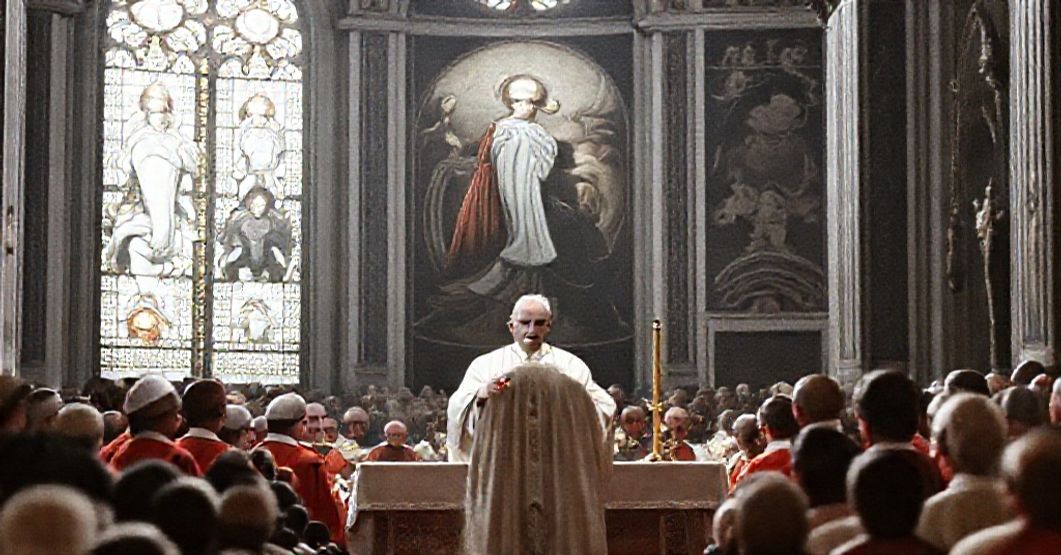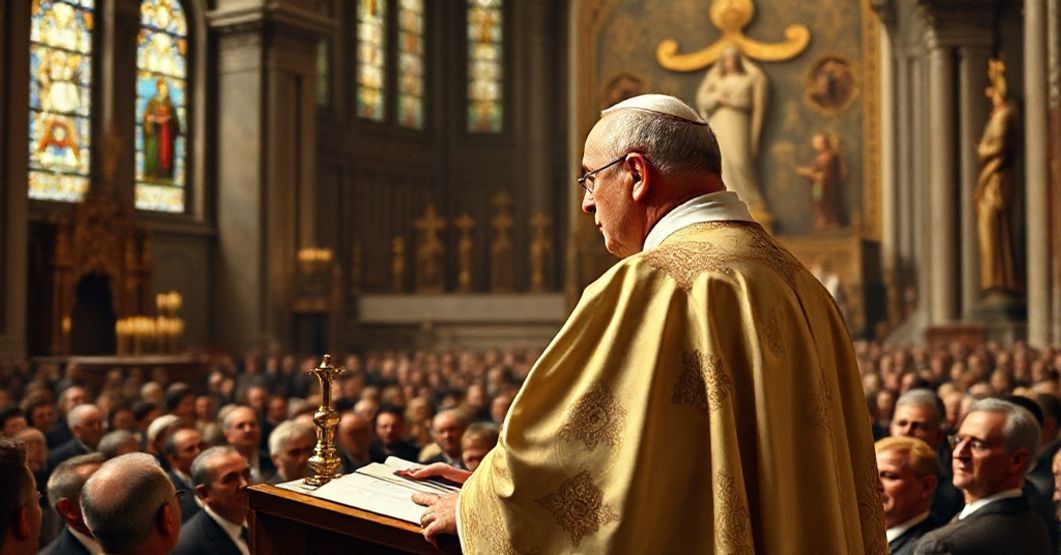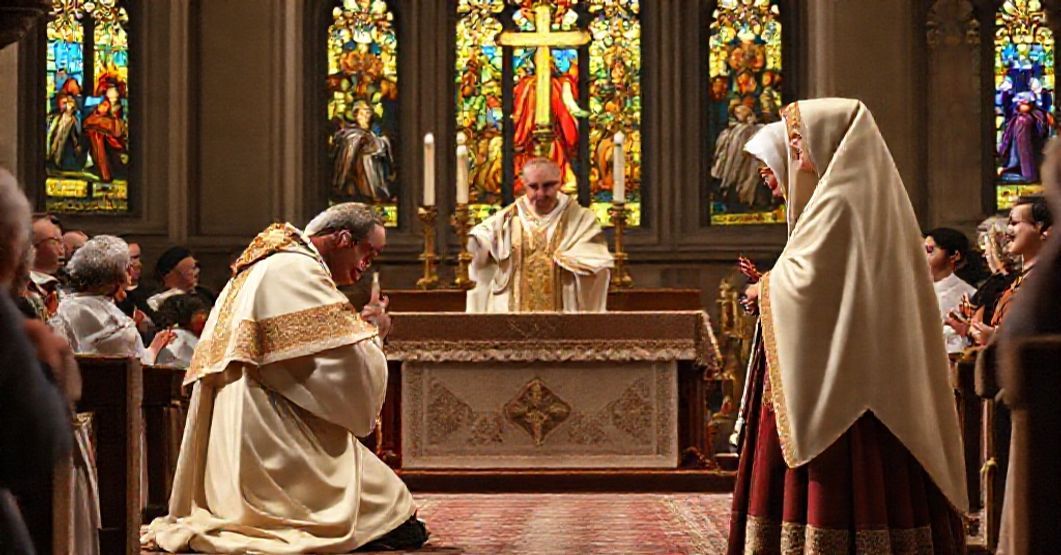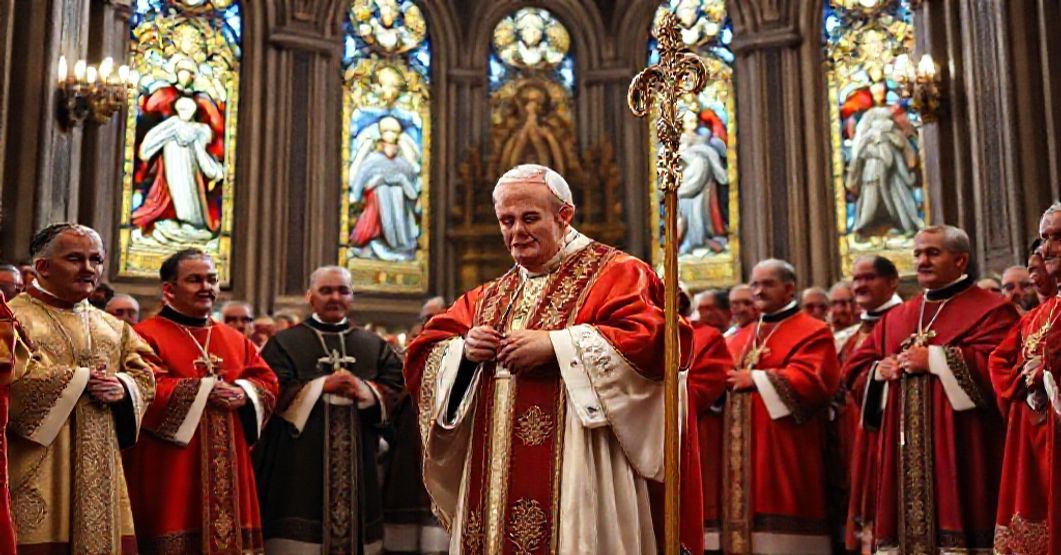Antipopes of the Antichurch



















Timeline of this heretical pontiff
Encyclical Letters
+ 15 posts1959
+ 7 posts1961
+ 4 posts1962
+ 2 posts1963
+ 2 postsApostolic Exhortations
+ 3 postsApostolic Constitutions
+ 93 posts1958
+ 6 posts1959
+ 87 postsMotu Proprio
+ 15 posts1958
+ 1 posts1959
+ 1 posts1962
+ 11 postsApostolic Letters
+ 151 posts1958
+ 4 posts1959
+ 63 posts1960
+ 78 posts1961
+ 1 posts1962
+ 4 posts1963
+ 1 postsSpeeches
+ 99 posts1958
+ 2 posts1959
+ 26 posts1960
+ 29 posts1961
+ 16 posts1962
+ 24 postsMessages
+ 6 posts1959
+ 4 postsHomilies
+ 4 postsLetters
+ 152 posts1958
+ 1 posts1959
+ 48 posts1960
+ 32 posts1961
+ 31 posts1962
+ 30 posts1963
+ 10 postsNot categorized
+ 1 posts1958
+ 1 postsNews feed


LA IN SOLLEMNI CANONIZATIONE BEATI MARTINI DE PORRES (1962.05.06)
On 6 May 1962, in the Vatican Basilica, John XXIII delivered a Latin homily at the solemn act by which he and his conciliar apparatus enrolled Martin de Porres among the “saints.” He links this canonization directly to his expectations for the upcoming Second Vatican Council, presenting Martin’s humility, charity, social concern, and devotion as emblematic fruits of the new orientation he expects from the Council and as a providential sign for contemporary “social institutions” and peoples, especially Peru. The entire discourse functions as a preparatory hymn for Vatican II, using Martin de Porres as a proto-symbol of conciliar humanism and interracial-social integration. Already in nuce, this homily reveals the theological inversion at work: the true doctrine of sanctity and the reign of Christ is instrumentalized to legitimize the conciliar revolution.


La in Sollemni Canonizatione Beati Ioannis de Ribera (1960.06.12)
The homily attributed to John XXIII on the occasion of the canonization of John of Ribera (12 June 1960) presents itself as a pious exhortation: it recalls the dogma of the Most Holy Trinity, extols sanctity as a “work” of the Trinity, sketches the life of John of Ribera as a model bishop zealous for doctrine, discipline, catechesis, seminaries, synods, the Holy Eucharist, and steadfast faith amidst the perils of heresy and persecution. It concludes by turning to contemporary Catholics suffering under open enemies of the Church and by placing everything under the invocation of the dogma of the Trinity and the official liturgical prayer.
Yet precisely here lies the decisive problem: this carefully traditional façade functions as an ideological camouflage for the man who already stood as progenitor of the conciliar revolution; the homily’s selective emphases and strategic silences betray the program of the coming apostasy.


La in sollemni canonizatione beati Caroli a Setia… (1959.04.12)
John XXIII’s sermon for the canonization of Charles of Sezze and Joaquina de Vedruna is a carefully composed panegyric: it recounts the humble rural piety and Eucharistic devotion of Charles, the noble origins, marriage, widowhood, and charitable foundation of Joaquina, and proposes both as models accessible “in every state of life,” crowned by a final plea that their intercession sustain his already-announced conciliar program and the quest for worldly peace and unity under “one fold and one shepherd.”


Homilia Ioannis XXIII in die coronationis habita (1958.11.04)
In this coronation homily of 4 November 1958, Angelo Roncalli (John XXIII) addresses the cardinals, bishops, clergy, and faithful, presenting his self-understanding as Roman Pontiff through the image of the Good Shepherd; he distances himself from worldly expectations of a “political” or merely diplomatic pope, insists on pastoral meekness and humility as defining traits, evokes universal missionary concern and unity under one shepherd, and links his ministry to the model of St Charles Borromeo as bishop-reformer. Behind a pious biblical and traditional vocabulary, this discourse inaugurates a conception of the papal office in which sentimental “pastorality” and horizontal human considerations are quietly exalted over the full, juridical, doctrinal, and kingly authority of Christ and His Vicar, thereby opening the door to the conciliar subversion that will soon devastate the visible structures of the Church.
Varia
Announcement:
– News feed –implemented
– Antipopes separate web sites with their all documents refutation – in progress
